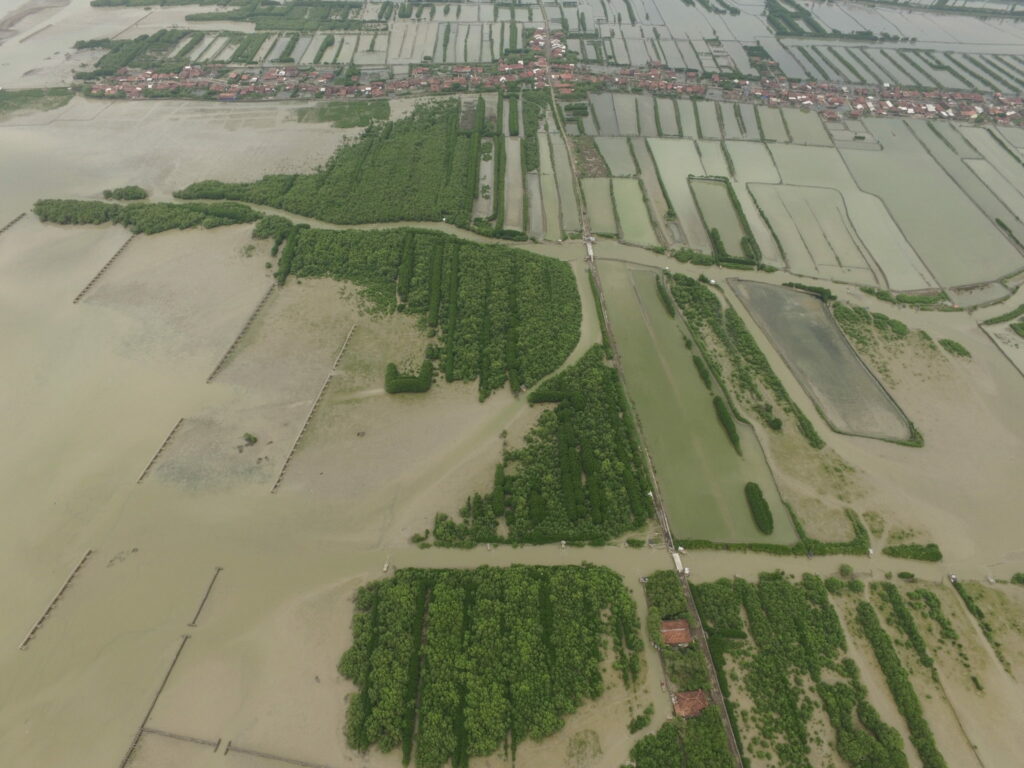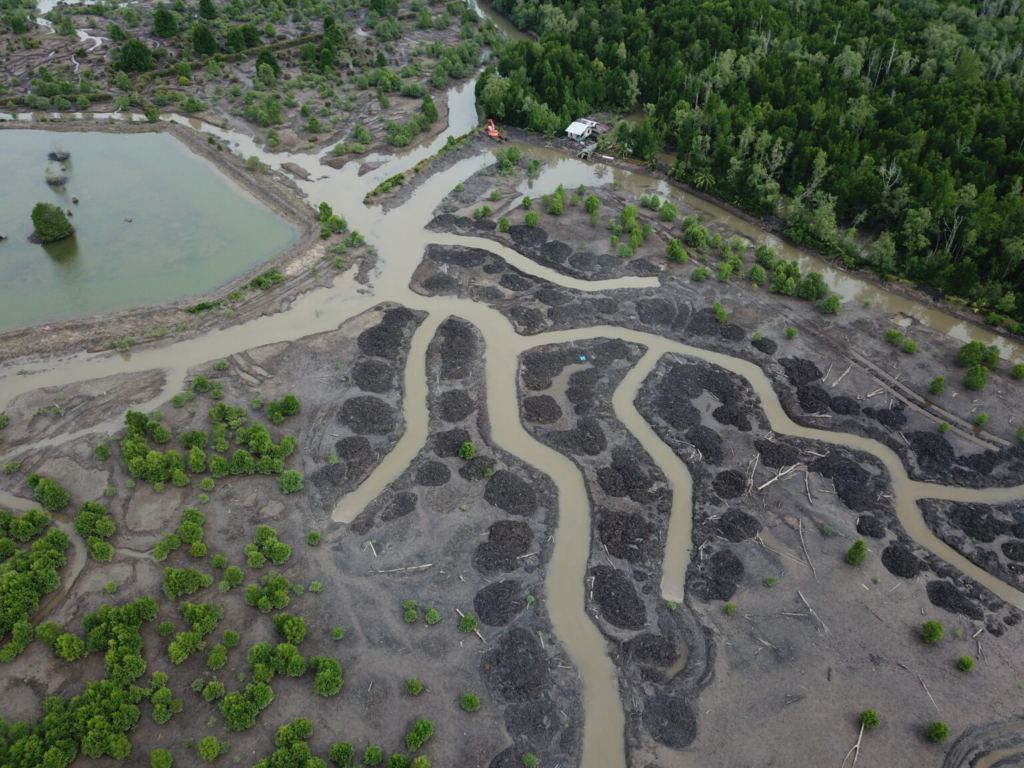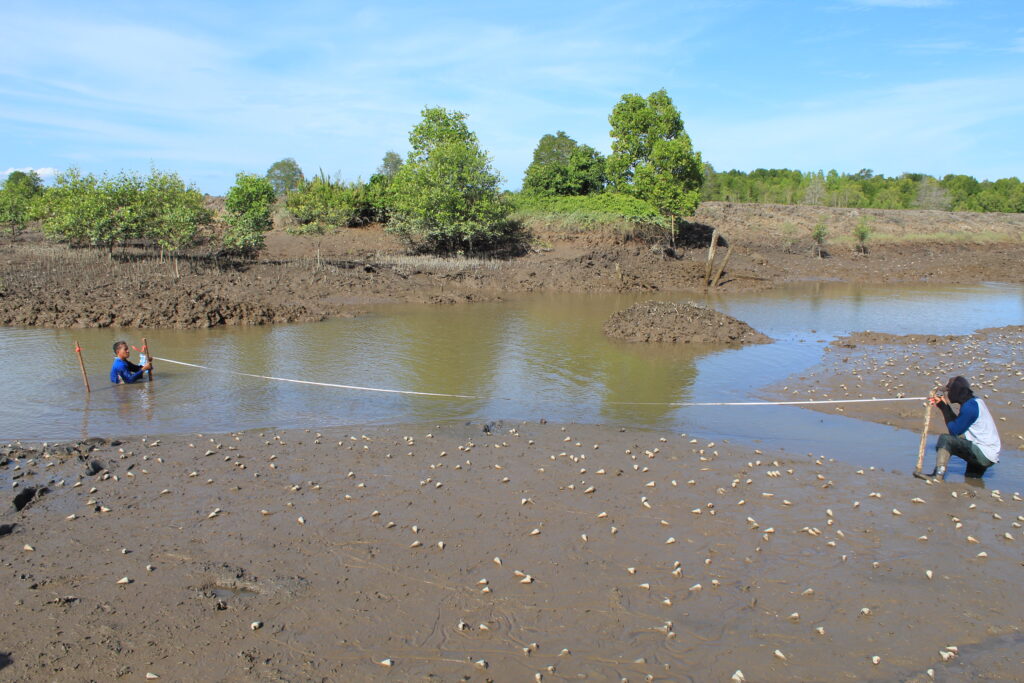
Restoring mangroves the natural way: the power of Ecological Mangrove Restoration
-
Climate change
-
Coasts & Deltas
Mangroves are nature’s guardians, protecting coastlines, preserving biodiversity, and helping fight climate change. Yet, conventional restoration efforts that rely heavily on planting saplings often miss the mark, with nearly 80% of such projects failing to create resilient, thriving mangrove ecosystems. What if, instead of only planting, we focused on giving mangroves what they need to grow back naturally? Welcome to the Community-Based Ecological Mangrove Restoration (CBEMR) approach, a method that champions natural regeneration, involves local communities and builds lasting ecosystems.
CBEMR doesn’t just plant trees—it restores an entire environment. It all starts with understanding the unique conditions of each site. With the community’s knowledge and involvement, CBEMR practitioners assess everything from soil quality to natural water flow. Only then can the real work begin: creating the conditions that allow mangroves to return and thrive. Let’s look at how CBEMR achieves this through some hands-on techniques.
Restoring hydrology: breaching pond bunds and re-creating creeks
One of the biggest barriers to natural mangrove recovery is altered water flow. When mangroves are converted to rice fields or aquaculture ponds, natural creeks and tidal flows are often blocked. To fix this, CBEMR projects may involve breaching these old pond bunds, restoring water circulation, and allowing tidal waters to reach previously isolated areas. In Guinea Bissau, many former rice fields and farmlands never turned back to mangrove forests, despite many local efforts to restore the area through active replanting. Thousands of hectares lay barren as wastelands with little ecological and socio-economic value.
Wetlands International worked with local communities to restore 2,600 hectares of abandoned rice fields by breaking up hardened top soils, breaching dykes, and digging creeks to improve the distribution of water and flush salt out of the system. As a result, mangrove seedlings have naturally re-established in most places, and even faster than expected. Some mangroves were planted only when necessary in areas where they did not regenerate naturally, despite good hydrological conditions. These areas lacked a natural supply of seeds and had unfavourable soil conditions.

Sediment trapping: using permeable structures to slow erosion
On exposed coasts where erosion has washed away essential sediment, CBEMR projects use permeable structures, often made from local materials like bamboo and brushwood, to break the force of incoming waves. These structures allow water to flow through but trap sediment, gradually rebuilding the coastal soil layer. This method has been effective in Vietnam’s Mekong Delta and along the coastlines of Indonesia and Suriname, where it helps create stable ground for mangroves to take root naturally.

Creating conditions for natural seed dispersal
Another powerful intervention is restoring connectivity to areas with natural seed dispersal. By re-establishing hydrological connections to “parent” mangrove trees nearby, CBEMR enables seeds and propagules to reach degraded areas naturally. With time and the right conditions, these dispersed seeds take root, growing diverse mangrove forests that mirror natural ecosystems.
In our demonstration site in Liagu, North Kalimantan, the hydrology of the mangrove forest had been disturbed as a result of 15 years of aquaculture activities. The absence of appropriate hydrological channels and the high elevation compared to other locations prevented mangrove propagules and seeds from nearby healthy mangroves to reach the abandoned ponds. To restore this, a zigzag pattern of channels was created that mimics the natural flow pattern. We also spread propagules in hydrological channel pathways, to accelerate the natural regeneration process and introduce some mangrove species other than pioneering species.

The return of a self-sustaining, diverse ecosystem, benefiting people and nature
Once the groundwork is set, CBEMR keeps the community at the heart of the restoration. Local members participate in techniques to generate natural mangrove recovery and monitor the mangrove growth and health over time. Monitoring becomes more than just counting trees. Practitioners track whether conditions like water flow and biodiversity are improving, and capture long-term changes. With CBEMR, a mangrove’s success isn’t measured by the survival rates of saplings but by the return of a self-sustaining, diverse ecosystem providing flood protection, biodiversity, and local livelihoods.
The CBEMR approach has transformed mangrove restoration from planting trees to nurturing an environment. It’s a technique that celebrates nature’s own power to recover—guided by a community that benefits from its success.

